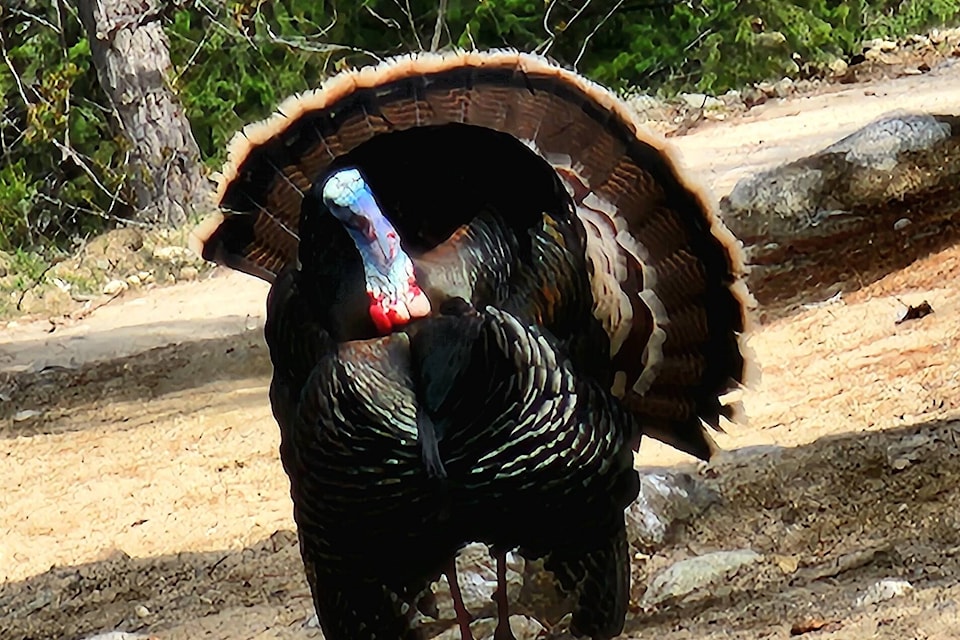Brenda Haley, a Trail photographer, shares some images of wildlife she captured during a recent drive around the city and surrounding areas.
This tom, or male turkey, gave her a series of poses, including shaking his tail feathers.
The wild turkey, or Meleagris gallopavo, is the world’s heaviest gallinaceous bird with adult males reaching weights of over 10 kg.
According to BirdAtlas.bc.ca, its large size, long legs and neck, featherless head, wattle, and beard make it easily distinguishable from other birds in its range.
During the day turkeys spend most of their time on the ground, often in large flocks; at night they fly into trees to roost.
The wild turkey is native only to southwestern and eastern North America, but has been successfully introduced for hunting to many other parts of the United States and Canada, Europe, and New Zealand.
The wild turkey population in British Columbia was estimated to be 4,000-5,000 birds.
It has likely increased since then, having expanded extensively northwards in the Kootenays, and west to the edge of the south Okanagan Valley. The highest Probability of Observation values are in the major valley systems in the south of the Southern Interior and Southern Interior Mountains ecoprovinces.
Too few records are available from point counts to indicate any patterns of abundance.
These turkeys prefer open mature forested areas. Nesting and summer habitats include scattered forest openings, agricultural fields and grazing ranges.
Turkeys nest on the ground, often at the base of trees, in areas that provide some form of horizontal cover.
Read more: A great Kootenay ‘Faith’
Read more: Scenes from a Christmas Day walk in Trail (2023)
Read more: #Local News
